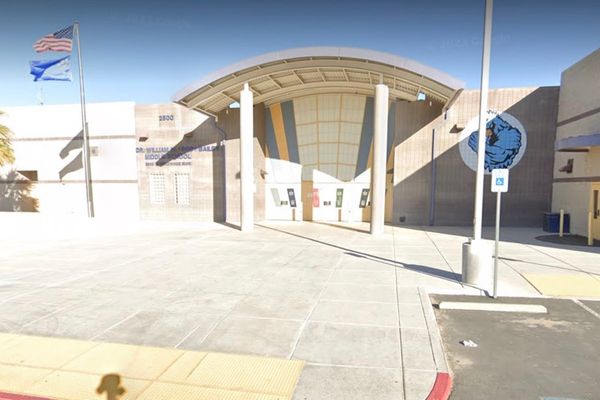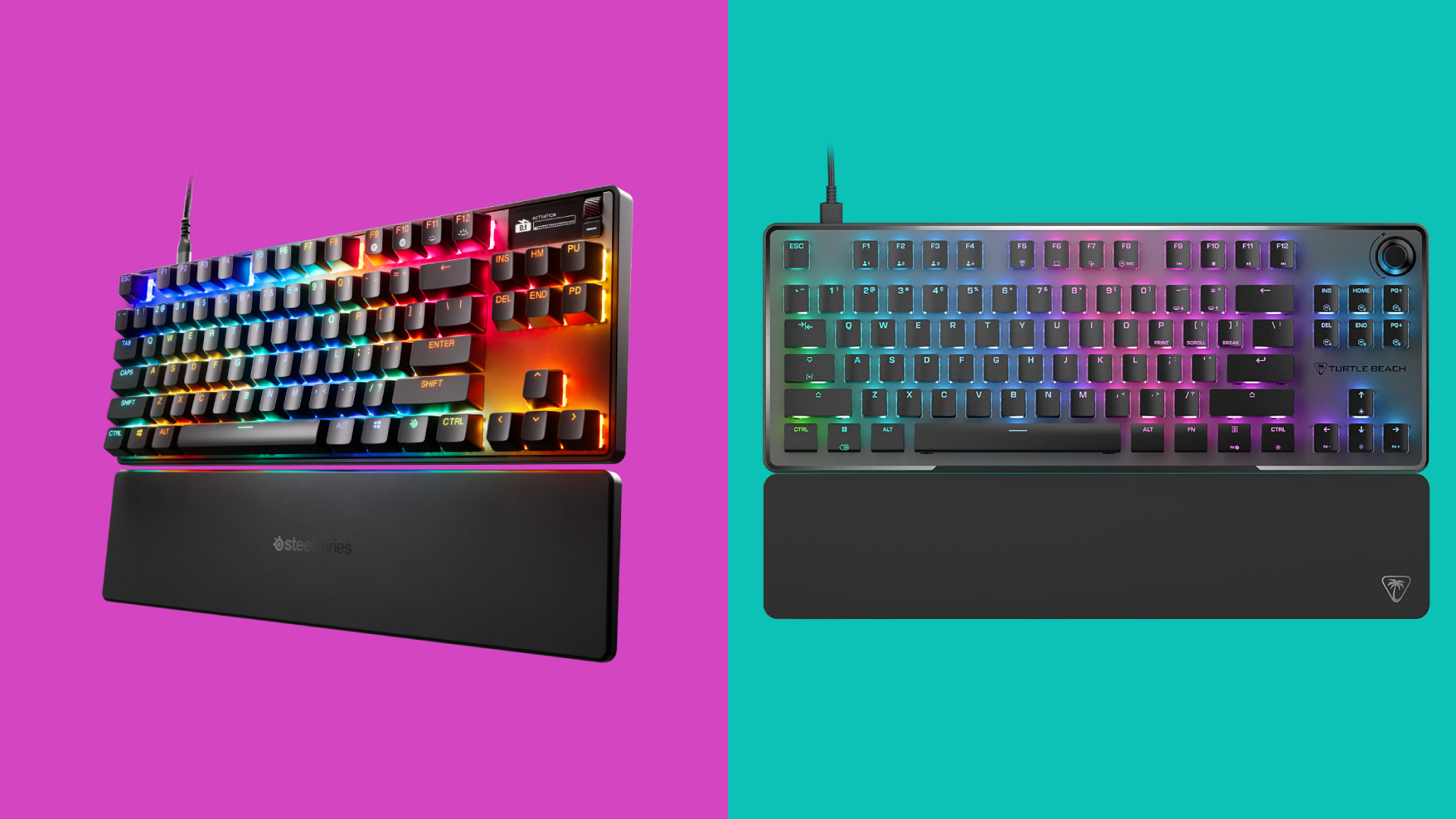
Offering analog capability at a reasonable price, the Vulcan 2 TKL Pro does an admirable job in most aspects. The controller emulation is a nice touch, but it’s just a shame this – and a few other analog features – aren’t executed well enough.
For
- Analog keys
- Good gaming performance
- Small and light, yet sturdy
Against
- No wireless option
- Not great for typing
- Software not the best
A superbly engineered gaming keyboard with the performance to match. It may be expensive, but it certainly delivers on its promises, making it one of the best analog keyboards around.
For
- Great performance
- Well made
- Good software
Against
- Expensive
- Unergonomic wrist rest
- Lacking analog tweaks
SteelSeries Apex Pro TKL Gen 3 vs Turtle Beach Vulcan 2 TKL Pro: specs
SteelSeries Apex Pro TKL Gen 3 vs Turtle Beach Vulcan 2 TKL Pro: price and availability
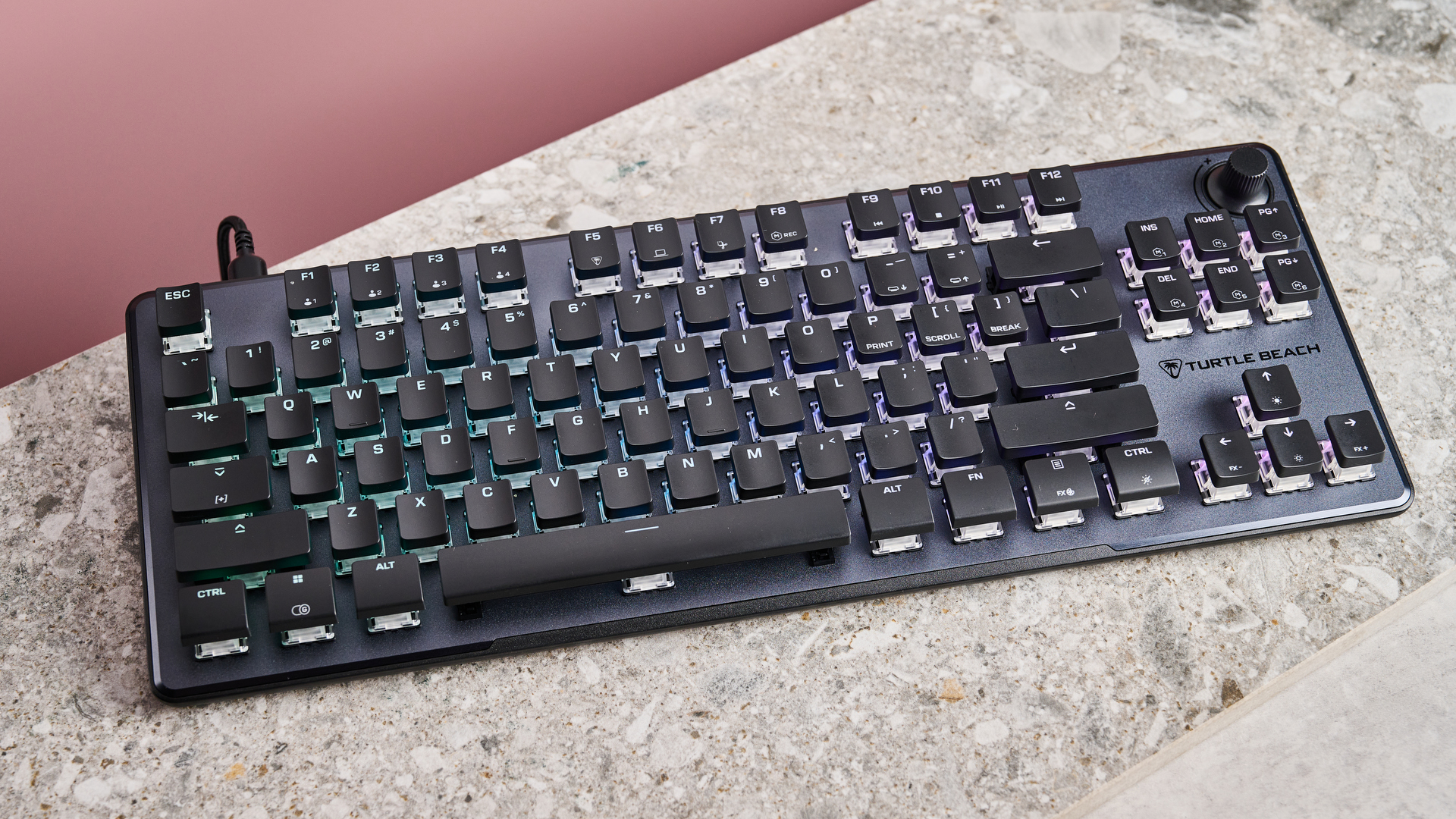
The SteelSeries Apex Pro TKL Gen 3 costs $219 / £209 (about AU$336) while the Turtle Beach Vulcan 2 TKL Pro costs $149 (about £113 / AU$219). Both keyboards are available now in black and white colorways, and both come with a wrist rest.
The Vulcan 2 TKL Pro is considerably cheaper, and seems like better value on the face of it, given both use the same Hall-effect technology in their analog switches, like some of the best gaming keyboards. However, the Vulcan 2 TKL Pro doesn’t quite match the premium build quality and performance of the Apex Pro TKL.
There is a wireless version of the Apex Pro TKL that naturally costs more, although the price difference isn’t as great as you might expect. The Vulcan 2 TKL Pro, on the other hand, is wired only.
SteelSeries Apex Pro TKL Gen 3 vs Turtle Beach Vulcan 2 TKL Pro: design and features
Despite both keyboards having the same TKL layout, they are quite distinct in all other regards. The Vulcan 2 TKL Pro is lithe and looks sleeker overall, whereas the Apex Pro TKL is more substantial in every way. It has a very thick chassis and weighs more than the Vulcan 2 TKL Pro, but it’s not quite as heavy as you might expect.
While both have floating keys, they’re more pronounced on the Vulcan 2 TKL Pro. They’re very thin and expose the switches underneath far more prominently. One benefit of this design is that it makes it easier to clean, as debris has no place to hide or lodge itself.
The T-shaped ABS keycaps equipped on the Vulcan 2 TKL Pro are completely smooth with a slight indentation, except those on the bottom row, which are convex instead. This makes them easier to use with your thumbs and little finger.
By contrast, the stock keycaps of the Apex Pro TKL are thicker and have a slight texture to them, although they’re still smooth to the touch. They’re also made from Double Shot PBT, which is the gold standard for gaming keycap material, thanks to their premium feel and durability. The keycaps on both keyboards can be switched out for others.
Both keyboards come with wristrests. However, I didn’t need to use one with the Vulcan 2 TKL Pro – the thinness of the chassis meant I was able to adopt a comfortable position straight away. However, I did need to use the wristrest with the Apex Pro TKL, which is unfortunate as it’s one of the keyboard’s weak points. It’s quite short and has no slope to it, which meant my left hand hung off the edge slightly when adopting the WASD position, causing some minor discomfort.
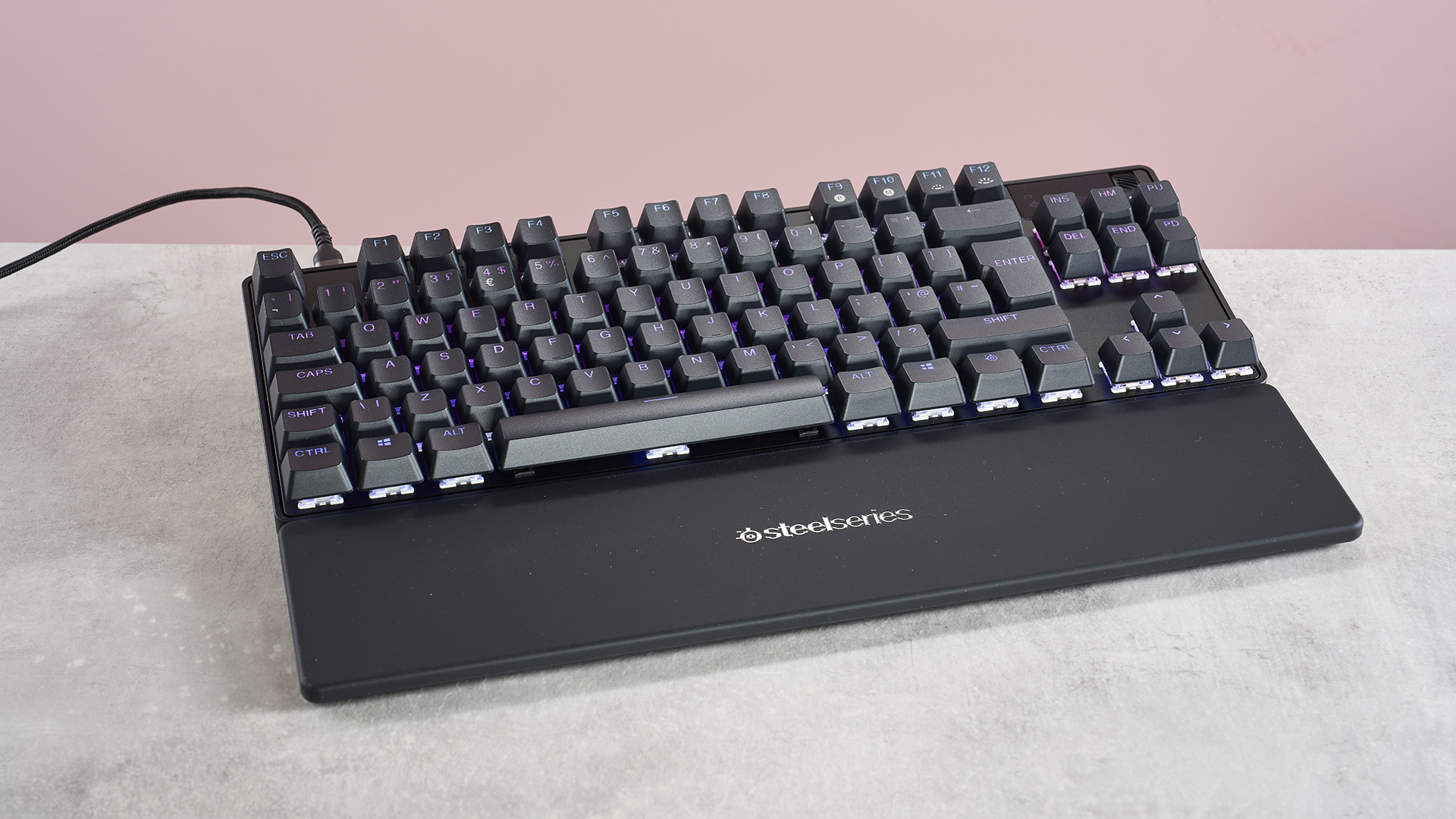
Both keyboards can be customized and tweaked using their respective software. The Vulcan 2 TKL Pro integrates with Turtle Beach’s Swarm 2, which at first glance didn’t fill me with confidence. The interface is poorly rendered, making it a chore to read text. Navigation isn’t the most intuitive either, with a lack of explanation for various features and functions making matters worse. Also, when rebinding keys, you can’t view the binds without first clicking on each individual key in question, which is highly inconvenient.
However, there are plenty of rebinding options in Swarm 2, including some niche system-level shortcuts and multiple binding layers courtesy of modes such as Easy Shift and others. Naturally, for a gaming keyboard, RGB customization is also possible.
Being an analog board, there are plenty of actuation adjustments too, including Multi-input and Rapid Trigger capabilities. The trump card of the Vulcan 2 TKL Pro and Swarm 2, though, is Controller mode, which lets you emulate a gamepad by mapping keys to buttons, triggers, and analog sticks.
SteelSeries’ GG software provides many of the same tweaks for lighting, rebinding, and actuation. It doesn’t offer as many binding layers as Swarm 2 offers, though, and it can’t match it for shortcut selection either. What’s more, controller emulation is absent too.
However, GG does feature customization options for its inbuilt screen (the Vulcan 2 TKL Pro has no screen), with options to upload your own GIFs and display in-game information for plenty of popular titles, including Counter-Strike 2, Minecraft, and League of Legends.
GG is also generally easier to use. But an issue affecting both software is the lack of visual feedback when adjusting actuation points. Swarm 2 does provide this in some cases, but it’s missing entirely from GG.
SteelSeries Apex Pro TKL Gen 3 vs Turtle Beach Vulcan 2 TKL Pro: performance
Both keyboards offer capable gaming performance. It took me some time to acclimatize to the narrower, T-shaped keycaps of the Vulcan 2 TKL Pro, and the deep indentations meant I couldn’t glide over them seamlessly, despite their low profile.
However, those indentations helped me to maintain the WASD position. Another boon for gaming is the adjustable actuation, as responsiveness can be ramped up when needed when snappy presses are required. However, the switches aren’t damped as well as those on the Apex Pro TKL, so harder pressers can result in an unpleasant sensation as the plastics slam together.
The Rapid Trigger function, though, works well, making quick-twitch movements possible while simultaneously maintaining lower sensitivity levels for initial presses.
Multi-input mode wasn’t as usable in my experience, as it was hard to exert the exact amount of pressure to hit predefined actuation points consistently for triggering those secondary inputs. The keys and switches fail to provide enough refinement or control, as they lack feedback.
As for Controller mode, this is something of a disappointment on the Vulcan 2 TKL Pro. Again, the switches and keys just don’t provide enough precision to emulate analog triggers and sticks effectively. I did find that adjusting the response curve in Swarm 2 helped matters, but not by enough. This means for scenarios where granular control is required, such as racing, the Vulcan 2 TKL Pro can’t rival a gamepad.
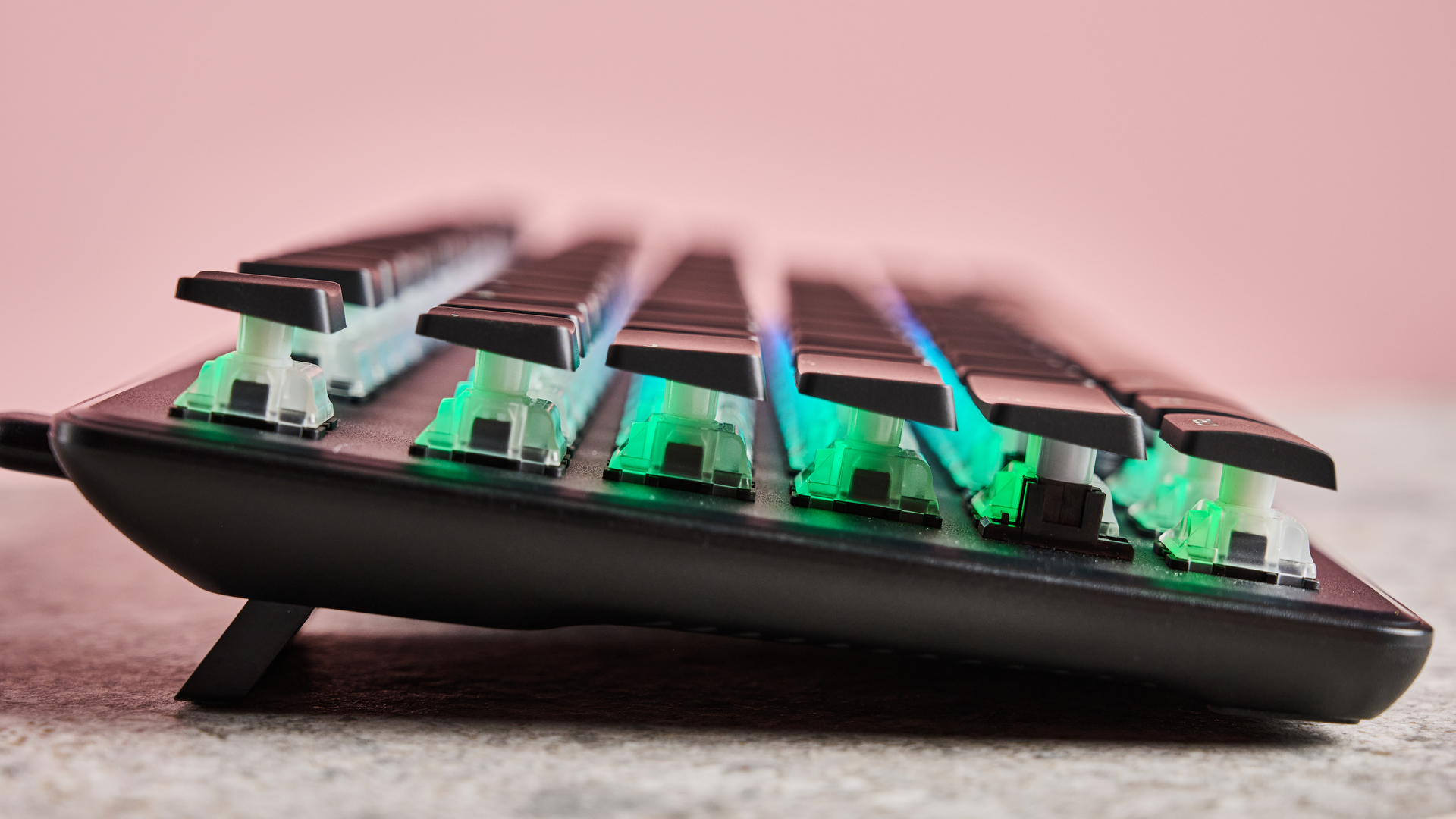
There are also issues around practicality, with many games lacking the mix of gamepad and keyboard controls for seamless transitions between the two. For example, in Grand Theft Auto V, you could map the W and S keys to R2 and L2 to allow for vehicle acceleration and braking, but then you wouldn’t be able to move your character on foot. Workarounds are possible, such as using the Easy Shift feature, but I still found this too inconvenient to be worth the trouble.
By contrast, the Apex Pro TKL doesn’t feature controller emulation, perhaps due to its impractical nature; I suspect it may just be a hard fact that keyboards will never match the analog precision of triggers and sticks on controllers.
However, it more than makes up for this omission with the rest of its abilities. In action, the overall feel of the Apex Pro TKL is superb. The switches are damped exceptionally well, providing a satisfying thock while still being snappy. The bottom row is easy to reach and use too, thanks to the relatively compact layout and the slope of the keys found here.
What’s more, hitting certain actuation points is much easier than with the Vulcan 2 TKL Pro, as the controlled nature of the keys and switches, coupled with the physical feedback they provide, gives you plenty of confidence.
As with the Vulcan 2 TKL Pro, the basic actuation adjustments are effective, making noticeable and useful changes to response times. The Rapid Trigger mode on the [] is equally capable as well.
SteelSeries Apex Pro TKL Gen 3 vs Turtle Beach Vulcan 2 TKL Pro: verdict
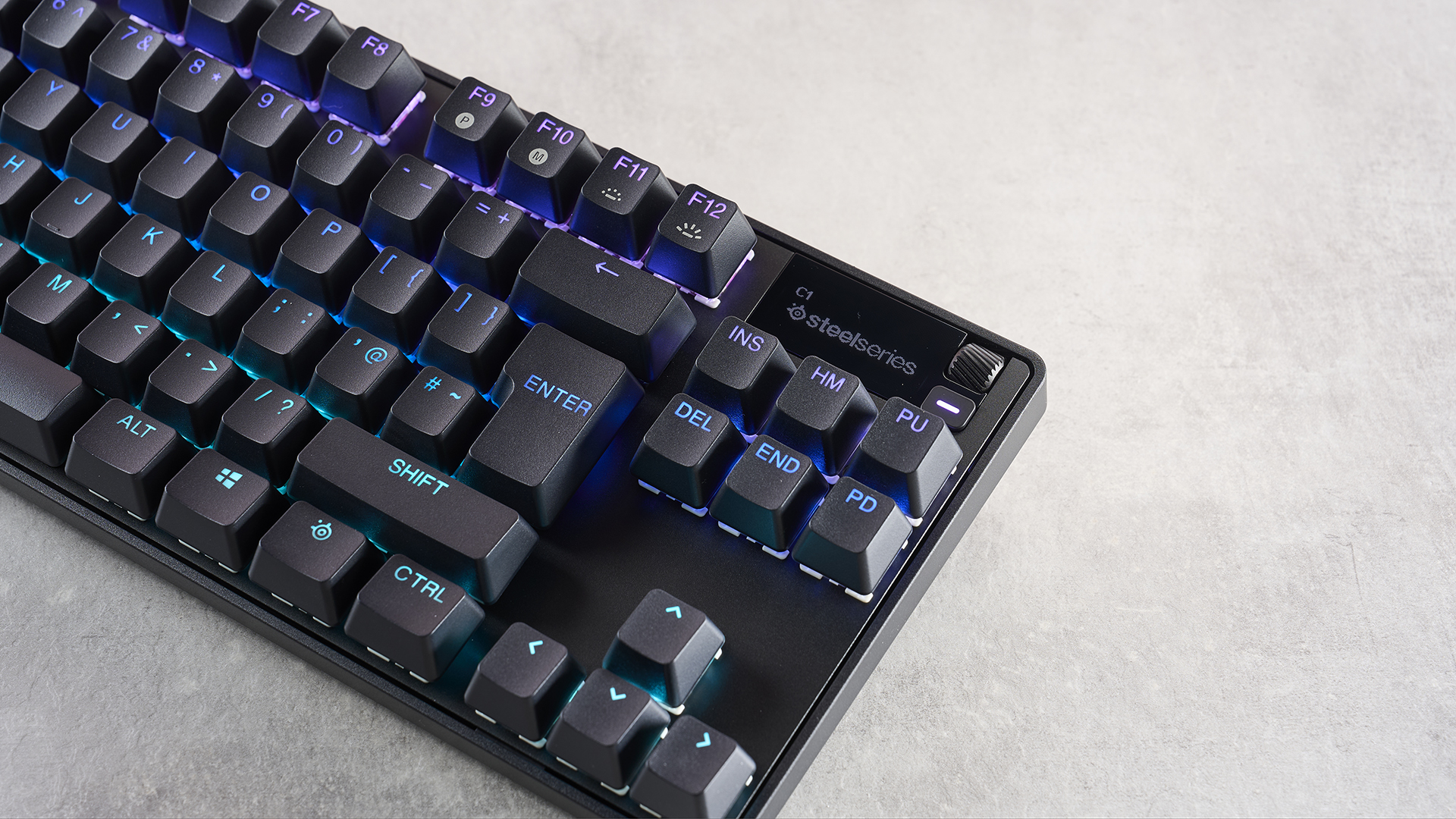
The Vulcan 2 TKL Pro does an admirable job considering its relatively low price, with useful actuation adjustments and plenty of other features and functions available via Swarm 2. While the analog performance is effective in certain regards, it isn’t quite as good as you might expect, and controller emulation doesn’t quite hit the mark either.
On the other hand, the performance and feel of the Apex Pro TKL is better in virtually every aspect. Thanks to the feedback of the switches, actuation points are easier to hit consistently, making for better analog functionality. The build quality is also unparalleled in this sector, and the class it oozes certainly lives up to its price tag. If you’ve got the cash to spend, the Apex Pro TKL won’t disappoint.



